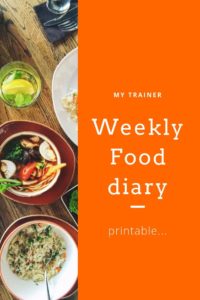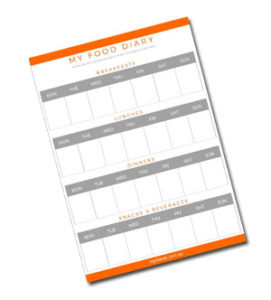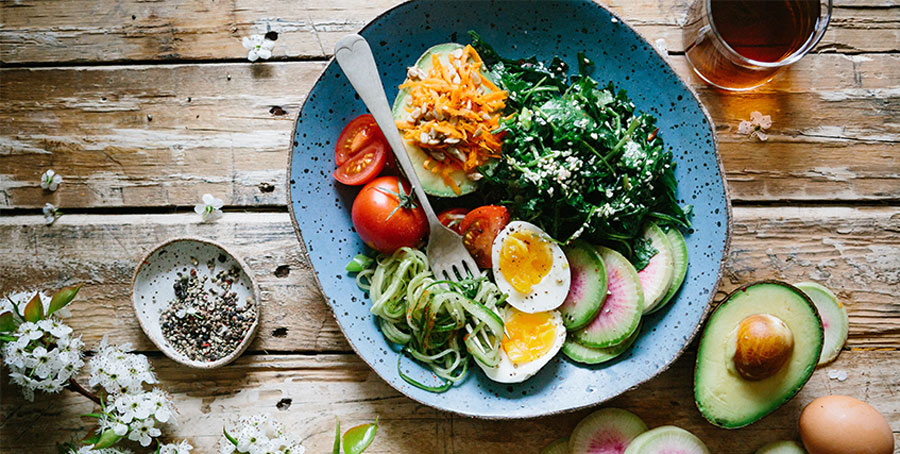 How to use a food diary
How to use a food diary
We are often asked by our clients “what should I be eating” if I want to…. lose weight, increase muscle, bulk up, trim down, increase my energy etc. This is a great question to ask if you are wanting to achieve any health & fitness goal. Certainly what you eat (and don’t eat) makes a huge difference to your overall health, wellbeing and of course your weight. However, before you consider changing how you are eating (or attempting a “diet”), it is really valuable to have a good hard look at how you are eating right now. As this reveals a lot about your approach to nourishing your body, your eating habits and gives you and your trainer a bigger picture understanding of how to improve your overall nutrition to support your goals.
This is where a food diary becomes an invaluable tool. There are several ways to use a food diary and we will outline a few below, and share with you some of the tools we like to use.
24 hour recall
The 24 hour recall approach is a favourite tool of many health professionals because it’s an instant snapshot of what you just ate. There’s no self-adjustment of your eating because you know someone will be looking at it later. This is a great starting point to have an honest discussion about your food choices. Here’s how it works…
Starting from now, work backwards and write down everything you ate and drank for the last 24 hours. If you can recall the estimated times, right that down too, and even better if you can recall why you consumed it, where you were and how you felt. There’s no need to go into calories or macros at this point, we are simply looking at choices and potential triggers. If you can’t quite remember check out your recycling bin at the packaging you’ve recently collected.
Food tracker apps
There are a number of food tracker / fitness apps available these days, and they can be quite straight forward and also very complex. Depending on how much data you want to collect one of these may be a helpful tool for you. Whichever app you choose to use, its needs to be quick and relevant. Having to select individual ingredients, or brands of foods from an international nutritional database is confusing and time consuming. Ideally the app allows you to simply record the time, maybe snap a picture of your meal and enter a list of what you ate with the quantity. If it can easily provide you with calories or nutrition info that’s great, but first and foremost it should be convenient and easy to use.
Food diary spreadsheet
If you are the type of person who is in front of your computer a lot, you might like to track your food in a spreadsheet. Simply add some headings, for the different meals, and days and add the data as you go. The main challenge with this approach is you still need to keep a list as you go, so you can remember everything to get a full picture.
Snap a pic
I think we can all agree that we are sick at seeing instagram posts of peoples meals. However simply snapping a pic of everything you eat, can be a quick and easy way to track your food intake for the week. This is probably most helpful if you usually have your phone handy, and can’t be bothered writing things down. But it might take some discipline to take a picture of absolutely everything. No filters, hashtags or special staging required, just a visual record should be enough to get a good “picture” of what you are eating – see what I did there!!
 Printable Food diary
Printable Food diary
This is our personal favourite. Mainly because it’s so easy, it doesn’t require an internet connection, special skills or subscription. Simply print out the sheet, stick it on your fridge (or in your work bag) and write on your meals as you go. Ideally write down the time you ate, everything in the meal, plus any drinks, supplements, condiments etc. Again extra info like, why you ate that, or how you felt, can help to unpack your eating habits a bit more.
Here’s the one we created for our clients, you’re welcome to use it if it helps you. Click on the image to download a PDF version you can print out and use right away.
How to use a food diary to improve your eating habits
Whichever method you choose to use to track your eating, the important question is how do you use that info to eat healthier.
Firstly avoid attaching any shame or labels to your eating or yourself, and simply look at it is valuable information at this point.
The next step is to objectively assess what you have eaten based on its value to you. This value could be nutritional, flavour, energy, emotional, comfort, nostalgia, cultural, family etc. Hopefully, you see where I’m going with this. We all eat foods for a variety of reasons, food is not just fuel. Keeping in perspective the value of certain meals enables us to make good choices without obsessing or demonising any particular type of food.
I will put a caveat on that statement though. There is no such thing as “junk food”. There is food, and there is junk. If you are going to eat junk, (that’s totally up to you) but be honest with yourself. Junk includes soft drink, fast food, lollies and any food product that is created purely for taste and has no or low nutritional value. These products are simply created to entice you to purchase and eat more, and are usually laden with trans fats, sugar, (or artificial sweetener) salt, preservatives, and worse. These should be avoided or only eaten occasionally. If they are showing up regularly in your weekly food diary then, ideally start there when looking to make improvements.
When we are seeking to improve the overall diet of our clients, we look for the big wins first:
- Replacing soft drink / flavoured milk / sports drinks with water / soda water and squeeze of lemon.
- Limiting alcohol to only a few days a week and the number of glasses to the recommended guidelines
- Cutting down on sweet foods with added sugar (lollies, cakes, biscuits, cheap chocolate), and replacing them with naturally sweet foods like whole fruits
- Finding healthier alternatives where possible that deliver more nurtitional value, with the same taste
We also try to ensure our clients are not going hungry, by:
- Starting the day with a decent breakfast;
- ensuring they are eating regularly; and
- choosing foods that are tasty, feel satisfying and provide lasting energy.
This enable us to manage our blood sugars and avoid the afternoon sugar crash and accompanying cravings.
Once these good foundations are put in place and new healthier choices have set in as habit, we can look to identify other areas that might need adjustment, like macros, portion sizes, daily calorie needs etc. Most of the time taking a gradual approach to adjusting your eating habits is the safest way to ensure lasting change. That is of course, unless your diet needs a total overhaul, in which case we would always recommend you seeing a nutritionist or dietician for a prescribed personalised meal plan.

